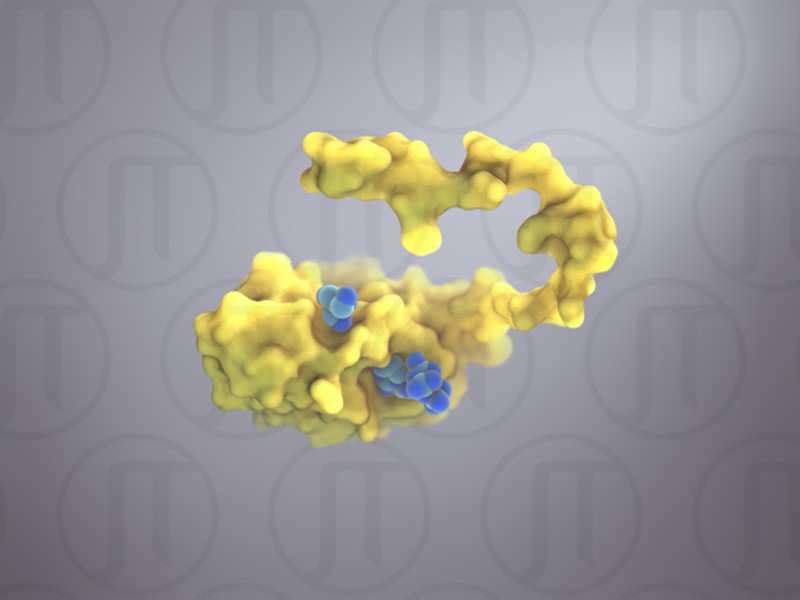Molecular Portrait: Mycobacterium Tuberculosis dUTPase
Mycobacterium tuberculosis causes cells to have a deficiency of thymidylate synthase (a molecule that is key in DNA synthesis and repair). Find out more information here: http://bit.ly/fYeKz4
PubMed Abstract: dUTPases are essential to eliminate dUTP for DNA integrity and provide dUMP for thymidylate biosynthesis. Mycobacterium tuberculosis apparently lacks any other thymidylate biosynthesis pathway, therefore dUTPase is a promising antituberculotic drug target. Crystal structure of the mycobacterial enzyme in complex with the isosteric substrate analog, alpha,beta-imido-dUTP and Mg(2+) at 1.5A resolution was determined that visualizes the full-length C-terminus, previously not localized. Interactions of a conserved motif important in catalysis, the Mycobacterium-specific five-residue-loop insert and C-terminal tetrapeptide could now be described in detail. Stacking of C-terminal histidine upon the uracil moiety prompted replacement with tryptophan. The resulting sensitive fluorescent sensor enables fast screening for binding of potential inhibitors to the active site. K(d) for alpha,beta-imido-dUTP binding to mycobacterial dUTPase is determined to be 10-fold less than for human dUTPase, which is to be considered in drug optimization. A robust continuous activity assay for kinetic screening is proposed.
In this molecular illustration: Amino Acid Sequence, Antitubercular Agents, Bacterial Proteins, Binding Sites, Catalysis, Crystallography, X-Ray, Deoxyuracil Nucleotides, Enzyme Inhibitors, Fluorescence, Magnesium, Microbial Sensitivity Tests, Molecular Sequence Data, Mycobacterium tuberculosis, Protein Conformation, Pyrophosphatases, Tryptophan, Molecule










































